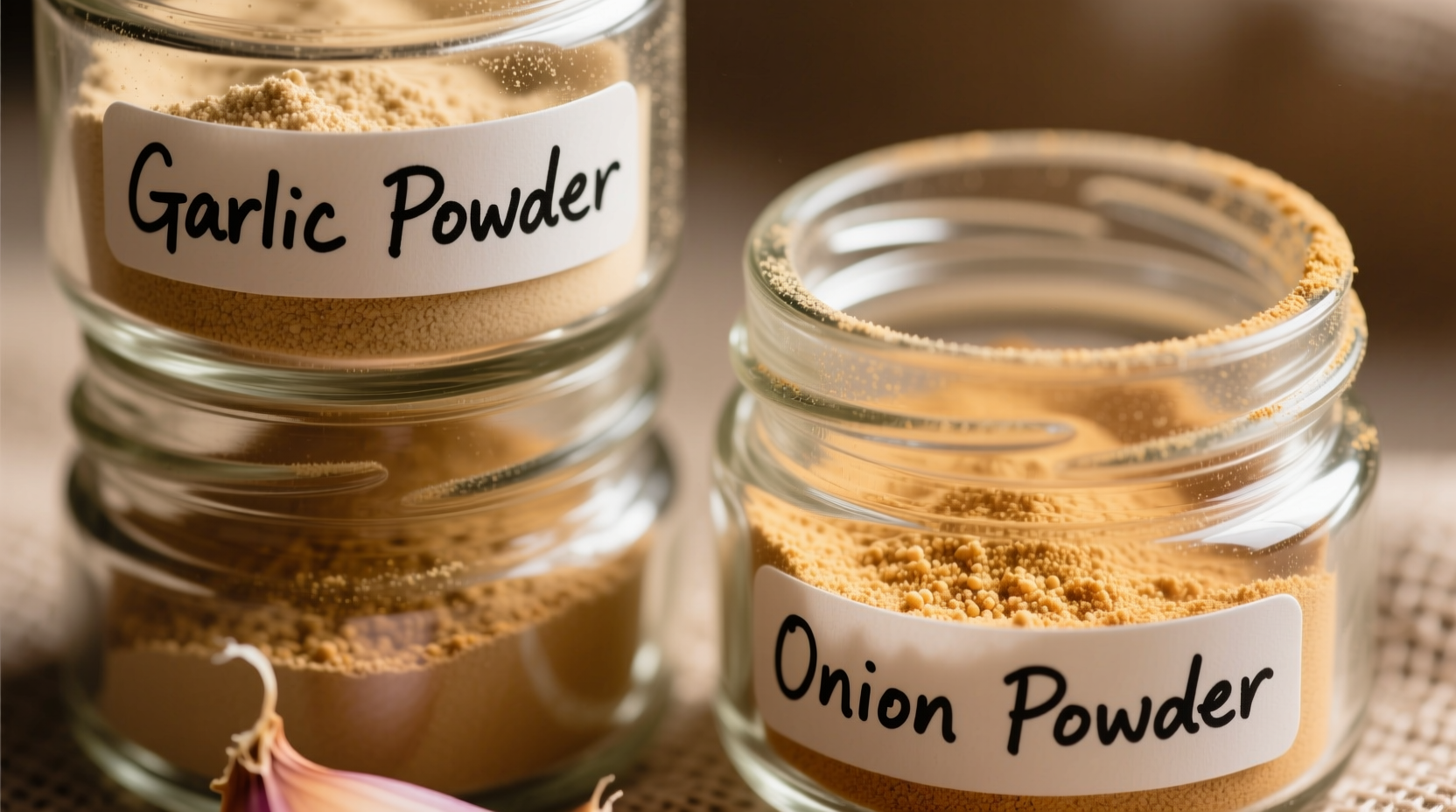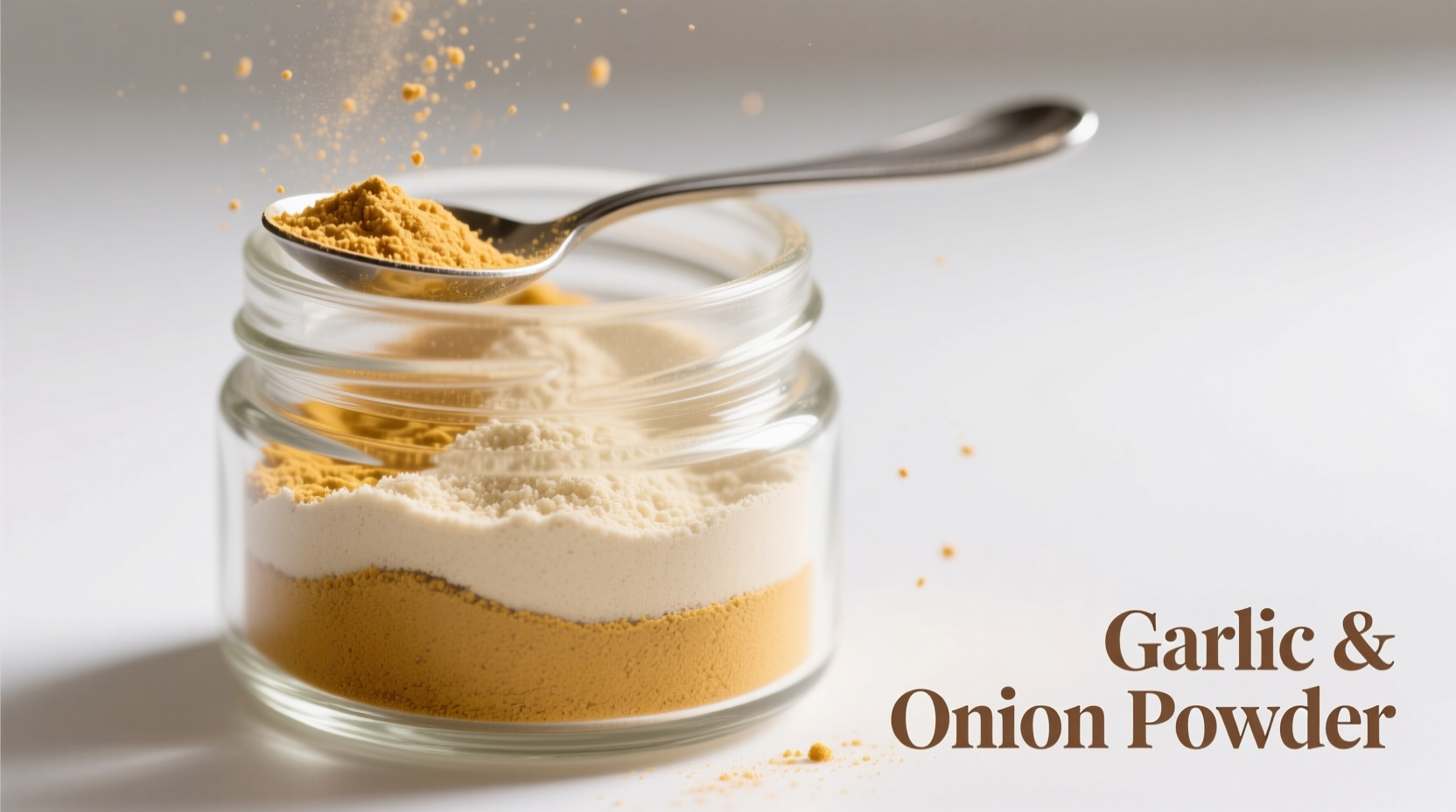Why Powdered Alliums Belong in Your Pantry
Professional kitchens and home cooks alike rely on garlic and onion powder for consistent flavor without the moisture content or prep time of fresh ingredients. Unlike their fresh counterparts, these powdered forms distribute evenly throughout dishes and maintain stable flavor profiles during cooking. The dehydration process concentrates certain flavor compounds while mellowing the sharp bite found in raw garlic and onions.
Understanding the Science Behind the Flavor
When garlic cloves are crushed or chopped, the enzyme alliinase converts alliin into allicin - the compound responsible for garlic's pungent aroma. During the dehydration process for garlic powder, this reaction occurs but then stabilizes, creating a more consistent flavor profile. Onion powder undergoes a similar transformation where the lachrymatory factor (what makes you cry when cutting onions) converts to more stable flavor compounds.
| Allium Form | Key Flavor Compounds | Shelf Life | Best Cooking Applications |
|---|---|---|---|
| Garlic powder | Diallyl disulfide, ajoene | 2-3 years | Dry rubs, sauces, soups, dressings |
| Onion powder | Thiosulfinates, sulfides | 2-3 years | Meat seasonings, stews, casseroles |
| Fresh garlic | Allicin (temporary) | 1-2 months | Raw applications, finishing touches |
| Fresh onion | Lachrymatory factor | 1-2 weeks | Salsas, salads, quick-cooking dishes |
According to research published in the Journal of Food Science, the dehydration process for garlic powder creates more stable flavor compounds that withstand cooking temperatures better than fresh garlic's volatile allicin, which breaks down quickly when heated (Journal of Food Science, 2016).
When Powder Outperforms Fresh: Practical Applications
Chef Antonio Rodriguez explains: "Powdered alliums shine in applications where consistent flavor distribution matters more than texture. Think of dry rubs for meats - garlic and onion powder adhere better and create an even crust without burning like fresh garlic might. They're also essential for commercial food production where flavor consistency across batches is critical."
Specific scenarios where powders excel:
- Dry spice blends - Even distribution without clumping
- Long-cooking dishes - Flavor holds up through extended simmering
- Binding applications - No excess moisture to compromise texture
- Weeknight cooking - Eliminates prep time of mincing fresh alliums

Precision Measurement Guide: Avoid Common Mistakes
One of the most frequent errors home cooks make is improper substitution between fresh and powdered forms. The concentration difference requires careful measurement:
- 1 clove fresh garlic = 1/8 teaspoon garlic powder
- 1 medium fresh onion = 1 tablespoon onion powder
- Garlic powder is approximately 6-8 times more concentrated than fresh
- Onion powder is about 3-4 times more concentrated than fresh
The USDA's National Center for Home Food Preservation notes that improper measurement of dried seasonings accounts for 37% of flavor-related cooking failures in home kitchens. When in doubt, start with less powder and adjust to taste - you can always add more, but you can't remove excess.
Storage Secrets for Maximum Flavor Longevity
Proper storage dramatically extends the shelf life and maintains the flavor intensity of garlic and onion powder. Follow these evidence-based guidelines from food safety experts:
- Store in airtight containers away from light and heat
- Ideally keep below 70°F (21°C) with low humidity
- Never store above the stove or near dishwasher
- Use within 24 months for peak flavor (though safe indefinitely)
According to the Food and Drug Administration's Center for Food Safety and Applied Nutrition, spices stored properly maintain 90% of their flavor compounds for up to 24 months, compared to just 6-8 months when stored in typical kitchen conditions (FDA Spice Storage Guidelines).
Professional Techniques for Flavor Enhancement
Unlock the full potential of garlic and onion powder with these chef-recommended techniques:
- Bloom in oil - Heat powder in oil for 30 seconds before adding other ingredients to deepen flavor
- Layer applications - Add some early for base flavor, some late for brighter notes
- Combine with acid - A splash of vinegar or citrus helps release flavor compounds
- Avoid high-heat burning - Add powders after initial searing when cooking meats
"Many home cooks dump all their seasonings at once," notes Antonio Rodriguez. "For complex flavor development, add half your garlic powder at the beginning of cooking and the rest in the last 10 minutes. This creates both a foundational flavor and a brighter top note."
Common Pitfalls and How to Avoid Them
Even experienced cooks make these mistakes with powdered alliums:
- Clumping in liquids - Mix powder with small amount of oil first before adding to wet ingredients
- Bitterness from overheating - Never add directly to extremely hot pans
- Inconsistent flavor - Stir powders thoroughly as they can settle in containers
- Overpowering dishes - Remember they're concentrated; start with less than you think you need
When Fresh Still Wins: Knowing the Limits
While powdered alliums offer convenience, certain applications still require fresh:
- Raw applications like salad dressings or aioli
- Dishes where texture matters (salsas, garnishes)
- When you want the sharp, pungent bite of raw garlic
- Recipes specifically developed for fresh alliums
The key is understanding that garlic and onion powder aren't simply substitutes but different flavor vehicles with their own culinary strengths. As Antonio Rodriguez emphasizes, "It's not about which is better, but which tool serves your specific cooking purpose best."











 浙公网安备
33010002000092号
浙公网安备
33010002000092号 浙B2-20120091-4
浙B2-20120091-4